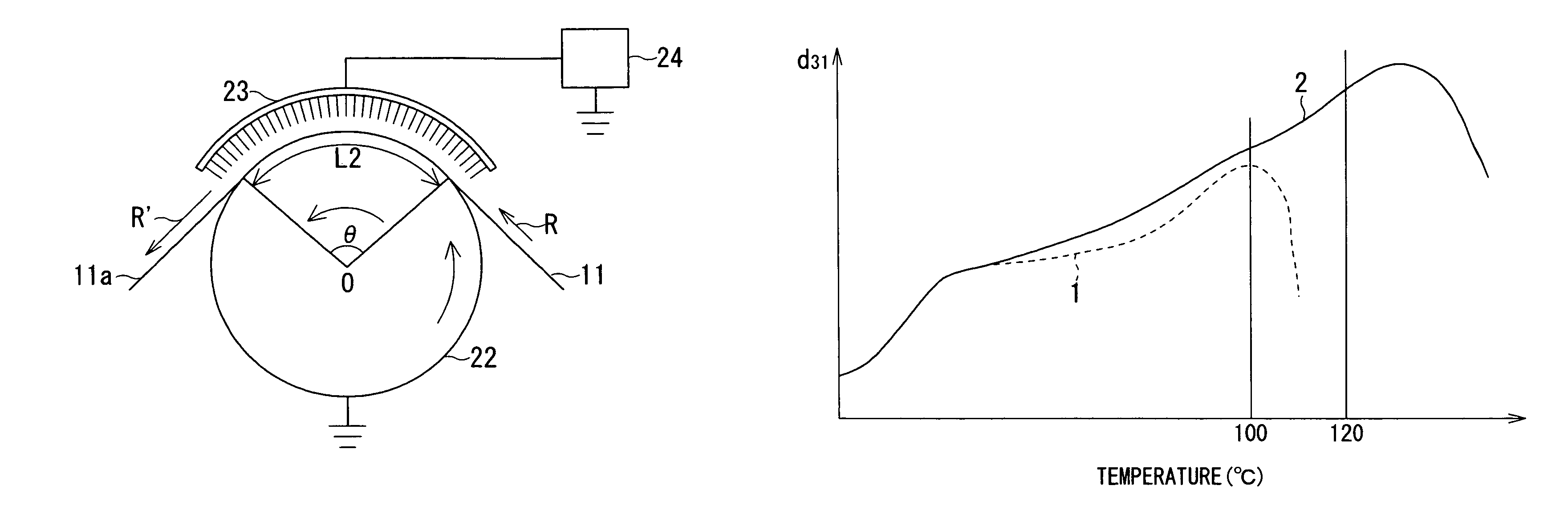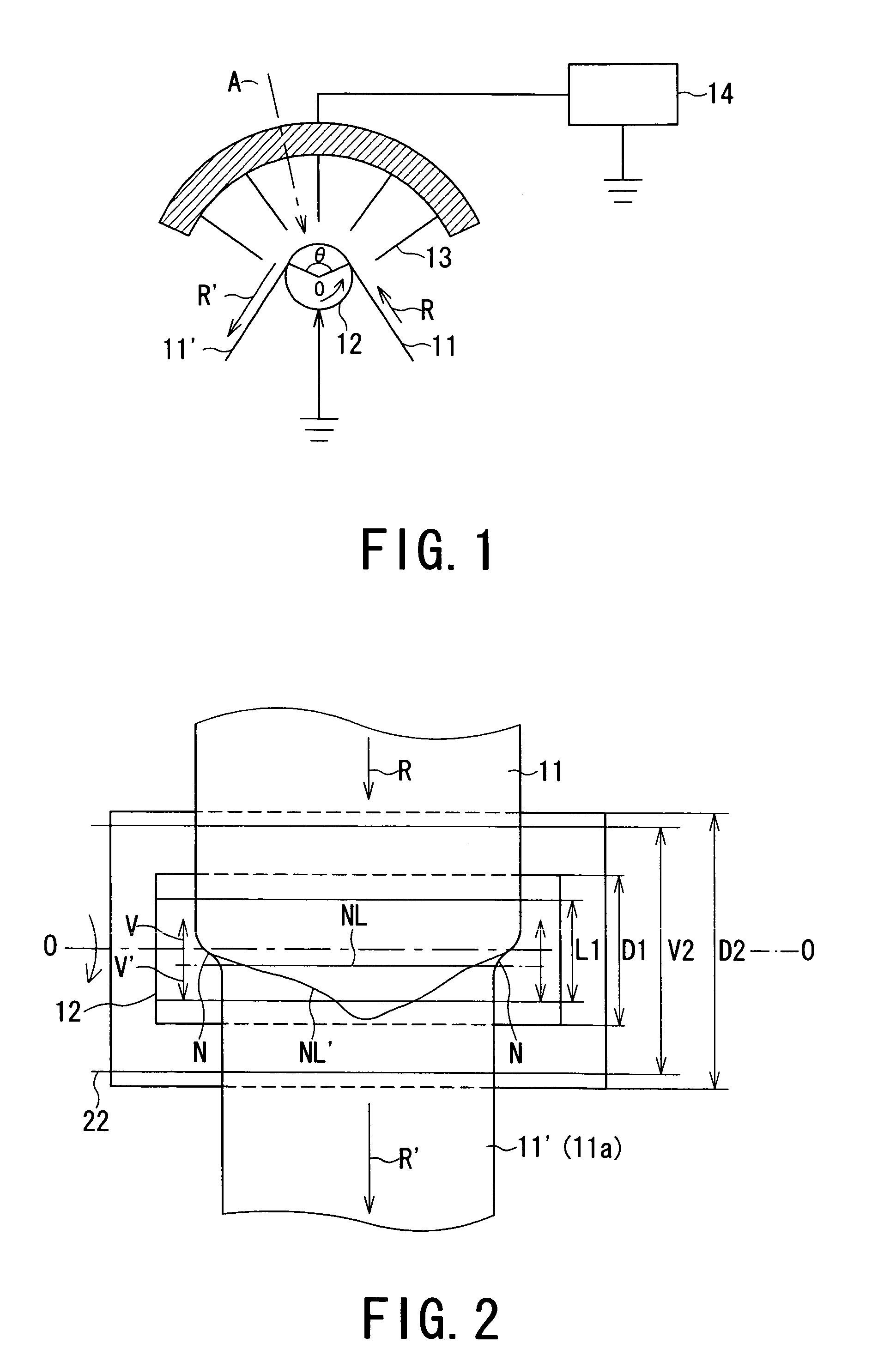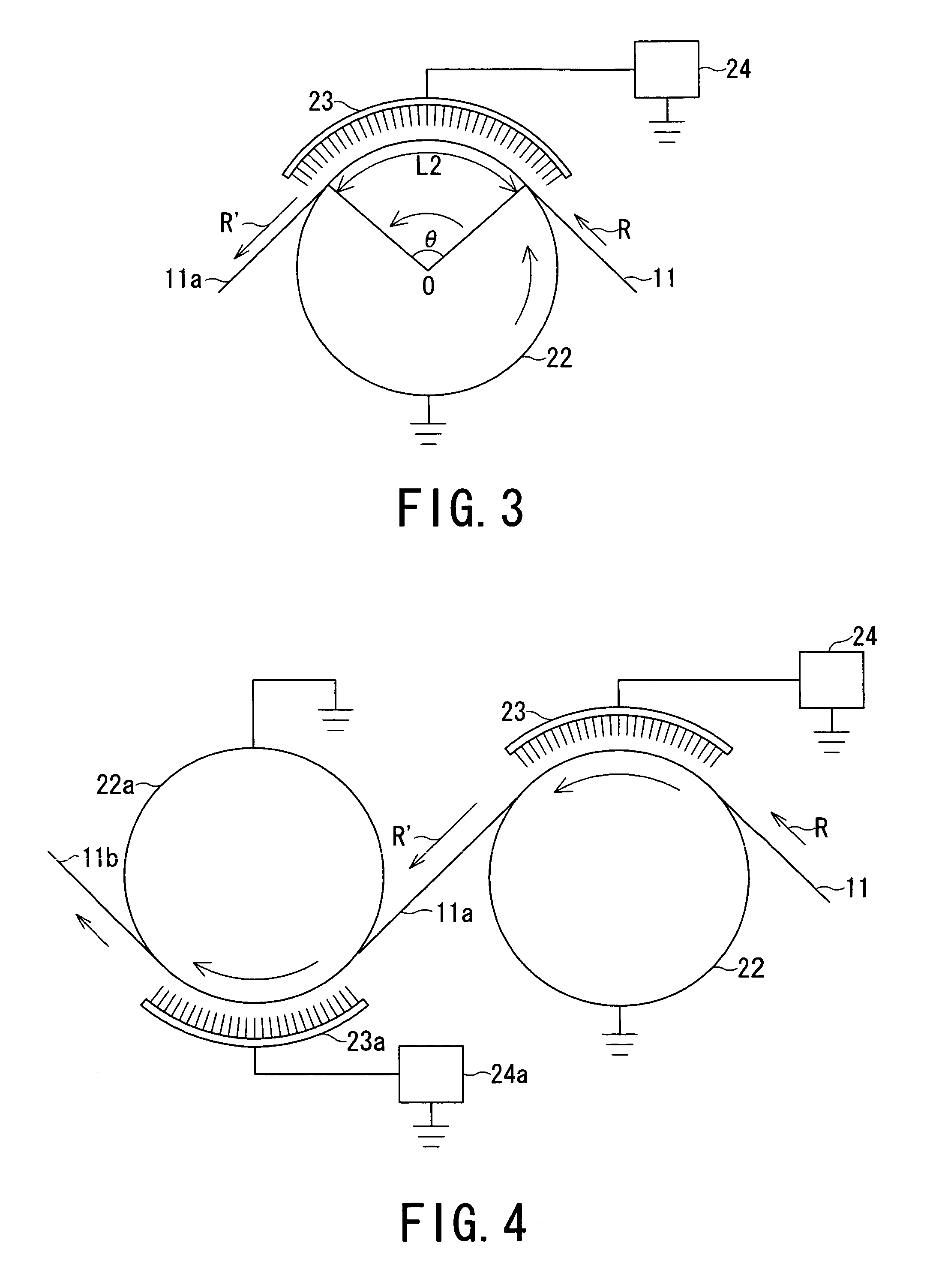Method for manufacturing a polymeric piezoelectric film
a piezoelectric film and polymer technology, applied in the direction of electric/magnetic/electromagnetic heating, variable capacitors, transportation and packaging, etc., can solve the problems of difficult to form a necking portion, difficult to stably control the neck stretching, and difficult to form a polymer piezoelectric film, etc., to achieve stable piezoelectric performance, stable production, and large piezoelectricity
- Summary
- Abstract
- Description
- Claims
- Application Information
AI Technical Summary
Benefits of technology
Problems solved by technology
Method used
Image
Examples
example 1
[0059]A neck stretching-polarization concurrent processing of a 160 μm-thick PVDF sheet was performed in the same manner as in Comparative Example 2 except for using a heating roller (corresponding to one denoted by 22 in FIG. 3) formed by uniformly applying a lubricant comprising polytetrafluoroethylene fine particles in the form of an aerosol for spraying (“DAIFRE GA6010”, made by Daikin Kogyo K. K.) onto the surface of a hard chrome mirror-finished roller used in Comparative Example 2.
[0060]The processing could be continued until the voltage applied between the roller(22) and the needle electrodes (23) was increased up to 12 kV. Under this condition, a linear neck line NL was formed sufficiently within the roller-sheet contact length L2 (=ca. 70 mm) while some up-and-down fluctuation of the neck line was observed
[0061]The processing was continued until ca. 20 m of a piezoelectric film was produced, when the instability of neck line (i.e., non-linear formation and deviation out of...
example 2
[0063]A neck stretching-polarization concurrent processing of a 160 μm-thick PVDF sheet was performed in the same manner as in Example 1 except for using a heating roller (of surface roughness Ra=1 μm; corresponding to one denoted by 22 in FIG. 3) formed by abrading the surface of a hard chrome mirror-finished roller used in Comparative Example 2, successively with sandpaper (of # 40) and sandpaper (of # 240).
[0064]Under the voltage application condition of 12 kV between the roller(22) and the needle electrodes (23), a stable production of a piezoelectric film under a stable neck stretching state was possible while some fluctuation of a linear neck line within the contact length L2 region was observed, and the stable production state was maintained even after production of 100 m of piezoelectric film.
[0065]The thus-obtained piezoelectric film exhibited a piezoelectricity coefficient d31=30 pC / N (and a dispersion peak temperature≧120° C.) over the full width, and no irregularity in p...
example 3
[0066]A neck stretching-polarization concurrent processing of a 160 μm-thick PVDF sheet was performed in the same manner as in Example 2 except for using a heating roller (22) of 200 mm in outer diameter surfaced with a titanium oxide-based ceramic layer (of surface roughness Ra=1 μm and a resistance between the roller axis and the surface=77 ohm).
[0067]Under the voltage application condition of 12 kV between the roller(22) and the needle electrodes (23), a stable production of a piezoelectric film under a stable neck stretching state was possible while some fluctuation of a linear neck line within the contact length L2 region was observed, and the stable production state was maintained even after production of 200 m of piezoelectric film.
[0068]The thus-obtained film exhibited a piezoelectricity coefficient d31=30 pC / N (and a dispersion peak temperature≧120° C.) over the full width, and no irregularity in piezoelectricity coefficient or thickness was observed.
PUM
| Property | Measurement | Unit |
|---|---|---|
| diameter | aaaaa | aaaaa |
| central angle | aaaaa | aaaaa |
| surface roughness coefficient | aaaaa | aaaaa |
Abstract
Description
Claims
Application Information
 Login to View More
Login to View More - R&D
- Intellectual Property
- Life Sciences
- Materials
- Tech Scout
- Unparalleled Data Quality
- Higher Quality Content
- 60% Fewer Hallucinations
Browse by: Latest US Patents, China's latest patents, Technical Efficacy Thesaurus, Application Domain, Technology Topic, Popular Technical Reports.
© 2025 PatSnap. All rights reserved.Legal|Privacy policy|Modern Slavery Act Transparency Statement|Sitemap|About US| Contact US: help@patsnap.com



